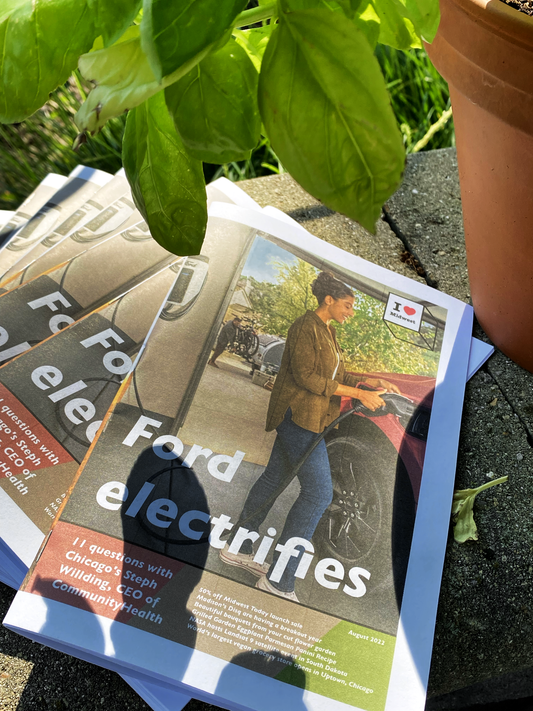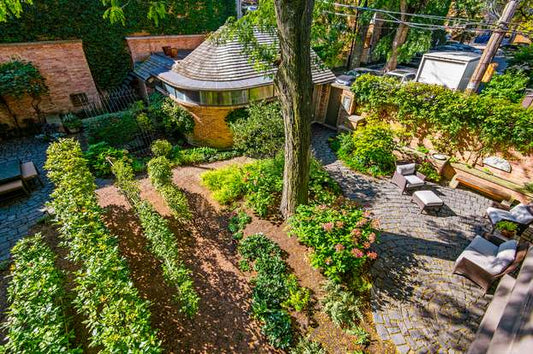If you're thinking about renewable energy in the United States, you may immediately think of the deserts of Arizona, New Mexico and California, or maybe the Hoover Dam. Less thought of, the Midwest actually produces more than a quarter of renewable energy produced in the United States. Wind, solar, biomass, and hydroelectric are all forms of renewable energy that perform well in the Midwest.
According to the U.S. Department of Energy, the Midwest region of the United States generates 30% of all energy generated nationally. The Midwest also produces 28% of all of the United States' renewable energy.
As for Illinois, "in 2021, renewable energy, including small-scale, customer-sited solar panel systems (less than 1 megawatt in capacity each) accounted for 11% of Illinois' in-state electricity generation, almost triple the amount generated a decade earlier. Wind is the primary renewable resource used for electric power generation in the state. In 2021, wind provided 90% of the state's renewable energy generation, and Illinois was fifth in the nation in utility-scale (1 megawatt or greater) wind capacity, with about 6,900 megawatts online. Illinois' best wind energy resources are found in the northern one-third of the state. About 1,200 megawatts of additional wind power capacity are either under construction or in advanced development."

In Indiana, "renewable resources accounted for almost 4,400 megawatts of Indiana's generating capacity in 2021, about one-sixth of the state's total, and they supplied 10% of the state's total electricity net generation. Wind energy contributed the largest share at about 8% of the state's total generation. Indiana's first utility-scale wind project came online in 2008 with about 130 megawatts of capacity. Today, wind turbines can be seen across central Indiana, and by early 2022, the state had more than 3,450 megawatts of wind capacity. Indiana's solar, biomass, and hydroelectric facilities also generate small amounts of electricity. Southwestern Indiana has the state's best, although moderate, solar resources, but solar power facilities are found statewide. Utility-scale facilities provide nearly three-fourths of the electricity generated from solar resources in Indiana. The rest is from small-scale (less than 1 megawatt) customer-sited installations like rooftop solar panels."
For Iowa, "in 2021, nearly three-fifths of Iowa's total electricity net generation came from renewable resources, almost all of it from wind. The state was the second-largest wind power producer, after Texas. Wind energy powered 58% of Iowa's net generation, the highest share of any state. Iowa's wind power is expected to increase, as about 1,000 megawatts of new wind power generating capacity are scheduled to come online in 2022. The strongest winds occur in northwestern Iowa, and although there are wind power farms across the state, most are in the state's northern and western areas."
The state of Kansas, "in 2021, renewable resources provided 45% of Kansas’s in-state electricity net generation, almost all from wind power. Kansas, with its wide plains, is among the states with the best wind power potential. The state ranked among the top five states in total wind energy generation, and Kansas had the third-largest share of electricity generated from wind—following closely behind Iowa and South Dakota. At the beginning of 2022, the state had nearly 8,250 megawatts of installed wind generating capacity."

For the car-producing state Michigan, "renewable energy accounted for about 11% of Michigan's total in-state electricity net generation in 2021. Most of the state's renewable electricity generation comes from wind. In 2013, wind energy surpassed hydropower and biomass and became Michigan's largest source for renewable generation. In 2021, wind energy supplied more than three-fifths of the state's renewable electricity and 7% of Michigan's total net generation from all sources. The state's strongest onshore winds are along its curving Lake Huron coastline. Michigan ranks 17th in the nation in generation capacity and 14th in actual generation from wind energy. The state has 32 wind farms with a total generating capacity of just over 3,200 megawatts. Many of Michigan's wind farms are located between Saginaw Bay and Lake Huron in the eastern part of the state's Lower Peninsula."
In Minnesota, "wind energy provides most of Minnesota's renewable electricity generation. In 2021, it accounted for three-fourths of the state's total renewable generation. Minnesota ranks eighth in the nation in wind capacity and accounts for more than 3% of the U.S. total. In 2021, solar energy provided almost 4% of Minnesota's total electricity generation. More than 90% of that was from utility-scale installations."
Missouri, "in 2021, renewable sources accounted for nearly 12% of Missouri’s total in-state electricity net generation from both utility-scale (1 megawatt or larger capacity) and small-scale (less than 1 megawatt capacity), marking the first time renewable electricity exceeded 10%. Missouri’s primary renewable electricity sources are wind energy, which provided more than 70% of the state’s renewable generation, and hydropower, which provided 20%. Solar and biomass provided the remainder. At the beginning of 2022, Missouri had more than 2,200 megawatts of wind power generating capacity and an additional 57 megawatts under construction. In 2020 and 2021, nearly 1,300 megawatts of wind power generating capacity were added, more than doubling the previous generating capacity of 954 megawatts. In 2021, Missouri ranked 13th in the nation in wind power generation."
Nebraska's, "renewable resources provide almost three-tenths of Nebraska's total electricity net generation. Wind energy potential is excellent across the entire state, and wind powers almost all of the state’s renewable generation. In 2021, wind contributed more than one-fourth of the state’s total net generation. Almost all of the state’s wind farms are in eastern Nebraska. Since 2020, four new wind projects with a combined capacity of almost 1,100 megawatts came online, and Nebraska had nearly 3,300 megawatts of installed wind capacity at the state’s 33 utility-scale (1 megawatt or larger) wind farms as of early 2022."

Astoundingly, "North Dakota’s wind power generation more than doubled from 2015 to 2021. The state has substantial and nearly continuous wind energy resources. In 2021, wind was the second-largest electricity generating source in North Dakota and provided about one-third of the state’s net generation. The state ranked sixth in the nation in the share of its electricity generated from wind energy. At the beginning of 2022, North Dakota had about 4,300 megawatts of installed wind power generating capacity. The state’s largest wind farm, located near Williston, has 300 megawatts of generating capacity and came online in early 2021."
In Ohio, "renewable energy resources supplied about 4% of Ohio's total in-state electricity generation in 2021. Wind power provided almost three-fifths of the state's renewable generation. Most of the state's wind farms are located in northwestern Ohio, the area with the state's greatest onshore wind potential. The state's largest wind farm, the 304-megawatt, 152 turbine, Blue Creek Wind Farm, is located near the state's northwestern border. By May 2022, Ohio had almost 1,100 megawatts of installed wind generating capacity. A planned offshore wind project located in Lake Erie near Cleveland has faced opposition from environmental groups."
South Dakota's, "renewable resources supplied more than four-fifths of the electricity generated in South Dakota in 2021, mostly from wind and hydroelectric power. South Dakota has some of the best onshore wind resources in the nation. In 2021, wind energy surpassed hydroelectric power’s contribution to South Dakota’s in-state electricity generation for the first time. Wind provided 52% of the South Dakota’s in-state net generation that year, a larger share than in all other states except Iowa. In early 2022, South Dakota had almost 2,800 megawatts of wind energy capacity at 23 active wind farms. Hydropower accounted for 30% of the state’s electricity net generation in 2021, down from 41% in 2020, in large part because of the increase in wind capacity."
For Wisconsin, "in 2021, renewable resources, in the form of hydroelectric power, wind energy, biomass, and solar energy, provided almost one-tenth of Wisconsin's in-state electricity net generation. Hydroelectric facilities were the largest contributors and accounted for more than two-fifths of the state's renewable electricity generation. Wind energy accounted for almost three-tenths of Wisconsin's renewable electricity generation. The state's best onshore wind energy resources are along ridges in eastern Wisconsin and in isolated areas in the northern section of the state's western uplands. Most of the state's wind farms are located in the eastern and southern parts of the state. Additional wind resource potential exists offshore in the Wisconsin portion of Lake Michigan."















